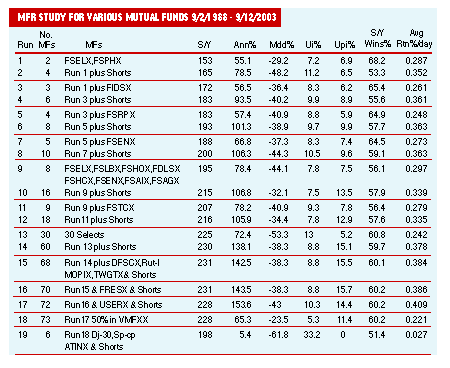Ranking Funds
Enhanced Returns With Mutual Funds
by Norman J. Brown
Is buy and hold the best strategy when it comes to mutual funds? Here's a mutual fund switching technique that uses multiple-fund ranking to improve returns.
In my earlier articles, I showed it was possible to switch a persistent fund using a technique I called one rank, or OR. The technique resulted in a significant improvement in annual return (ANN) and a reduction in maximum drawdown (MDD). The term one rank implies ranking a single mutual fund daily, buying on an up day (return of fund positive), and selling any day the fund is down (return negative). Further enhancement of ANN is made possible by adding a second fund, a beta = -1.0 version of the basic fund. This approach is equivalent to selling short during the OR "out of market period" (when normally invested in a money market). A simple equation closely approximated the resulting Orls (OR using both a long and short fund switching approach). The formula for the net up days per year for Orls is:
Orls (net days up) = N - 4S (Equation 1)
where N is 252 market days per year and S is the number of buys
and sells per year. This number of net days then leads to the Orls ANN,
given by:
GORLS = [1 + (%Avg Pos Rtn) / 100 ][N-4S] (2)
For a very long persistent fund, like Dfscx, an S value of 42.3 results in 82.8 net up days, which when entered into equation (2) (using 0.70% as the average up return) results in a possible gain of 78%. This is close to the actual gain of 67.6% reported in Figure 2 of my July 2003 article.

FIGURE 2: RESULTS FROM 19 DIFFERENT RUNS. The results proved very positive in run17.
Excerpted from an article originally published in the August 2004 issue of Technical Analysis of STOCKS & COMMODITIES magazine. All rights reserved. © Copyright 2004, Technical Analysis, Inc.
Return to August 2004 Contents